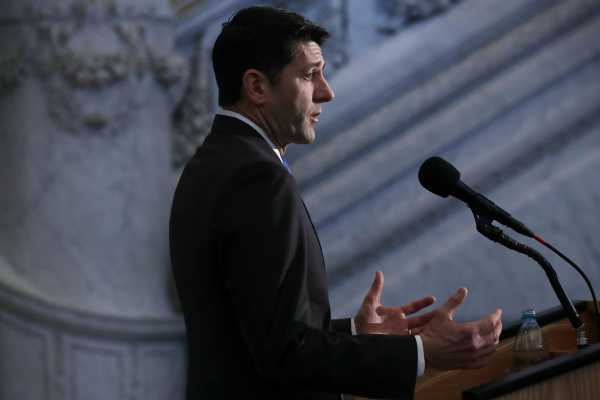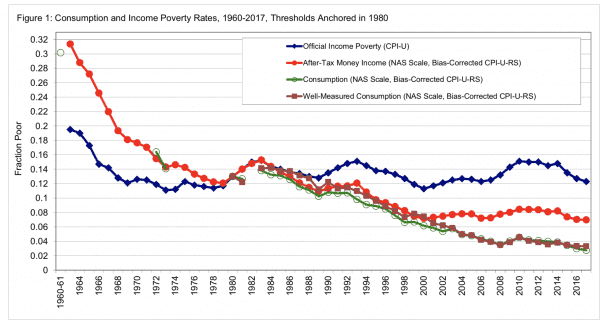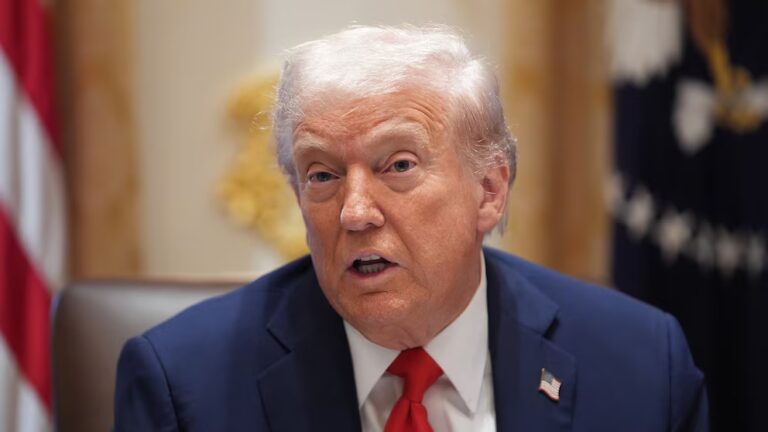
The first half of Speaker of the House Paul Ryan’s farewell address to Congress is dedicated primarily to his effort to convince himself that a deficit-financed tax cut for the rich represents not just an idea he happens to favor, but a substantive legacy that constitutes a worthy career-long labor. Then it went off the rails.
In the back half of his speech, Ryan challenged Congress to address the needs of the poor as he claims he attempted during his time in public service. This claim is at odds with his many attempts to take away health care for America’s most vulnerable, his abandonment of tax incentives for the lowest earners, and his commitment to dubious anti-poverty programs.
“You all know that finding solutions to help people lift themselves out of poverty is a personal mission for me,” he said, echoing a line that he has shopped to a lot of journalists over the years but that there is no evidence of in his record. He then went on to say a bunch of stuff that isn’t true about the social safety net, the American poor, and his own record on either.
It’s a perfect capstone to Ryan’s career: Rich people get tax cuts; poor people get pious words and misleading rhetoric.
Paul Ryan is wrong about the war on poverty
Ryan’s entire thinking about the subject of poverty is shaped by his deep commitment to a fundamentally false premise: the notion that anti-poverty programs have failed.
“Four years ago, when our nation marked the 50th anniversary of the War on Poverty, we exposed some hard truths,” he said. “For all the billions spent, and all the bureaucracies and programs created, the needle had barely moved.”
The sense that anti-poverty programs don’t reduce poverty is, however, largely an artifact of statistical methods. The official poverty measurement was developed before these programs were created, and thus it by definition excludes things like SNAP and Medicaid from measurements of people’s well-being. The measurements show data as if a family with $18,000 a year in income and no health insurance was in the exact same shape as a family with $18,000 a year in income and Medicaid coverage.
If you instead look at the actual amount of goods and services that low-income households are able to consume, you see that poverty has declined dramatically as a result of the Great Society and subsequent expansions of the social safety net.
Ryan doesn’t need to take my word for it. Check out the Annual Report on US Consumption Poverty assembled by Bruce Meyer and James Sullivan for the conservative American Enterprise Institute.

In response, Ryan would say that while social safety net programs may help improve the lives of the worst-off people in concrete material ways, that doesn’t really help because the real goal should be policy that lets people earn more for themselves.
“It is not just about creating jobs,” he said in his farewell address. “It is about restoring the meaning of a job, the meaning of work.”
Unfortunately, in his career as an actual legislative leader, Ryan executed a massive bait-and-switch on the question of making work pay.
Paul Ryan betrayed the poor on the EITC
Back in 2014, Ryan somewhat surprised the political world by endorsing an Earned Income Tax Credit (EITC) expansion that was very similar to one Barack Obama had proposed.
The EITC isn’t a perfect policy, but by subsidizing low-wage workers’ incomes it does square the political circle between liberals who want to expend public resources on helping the poor and conservatives who want to insist that poor people need to work for a living.
To get EITC money you need to work for it. An adequately generous EITC ensures that when you do work for your living, you end up earning a real living rather than poverty wages.
The problem, as Vox’s Dylan Matthews explained at the time, was a disagreement about budgetary offsets:
After becoming speaker, however, Ryan completely neglected the question of offsets and pay-fors.
He shepherded a tax cut that added $1.5 trillion to the deficit through Congress, and as soon as it passed he began championing legislation that would add trillions more to the deficit. He also pushed for Donald Trump’s plan to add hundreds of billions in spending — both military and non-military — as part of a larger Republican about-face on the question of whether or not deficits matter.
Back in 2014, Ryan was eager to help the poor with an EITC expansion but worried about how to pay for it. But as soon as Ryan stopped worrying about how to pay for things, he also stopped worrying about EITC expansion — and it didn’t get done. Instead of helping poor people help themselves by subsidizing their wages through the tax code, he championed the idea of helping poor people help themselves by subsidizing rich people’s investment income through the tax code.
Paul Ryan touts dubious “opportunity zone” measures
The one concrete measure Ryan can point to of his tenure in office that’s designed to help the poor is to boast that “new opportunity zones, part of tax reform, will bring more investment to distressed communities.”
One thing to note here is that Ryan is the speaker of the House, and the House’s initial version of tax reform didn’t even include these opportunity zones. They were added due to enthusiasm from Senate Republicans, and Ryan’s team agreed to them. But this isn’t even an idea he believed in strongly enough to push for when he had the chance.
What’s more, Ryan was almost certainly right to be leery of opportunity zones.
Basically, these zones work by offering a special tax break to people who make investments in low-income areas. That’s a huge boon to real estate developers, and Trump’s son-in-law Jared Kushner seems to be making money off the opportunity zone concept. The theory, then, is that by giving rich people financial incentives to locate investments in poor areas, some of the gains will filter down to actual poor people.
That may or may not be the case, but it’s extremely hard to see why you would think that will get you more bang for the buck in terms of poverty-reduction than directly giving the money to low-income people.
What’s more, it’s genuinely not clear that these programs work at all. Jim Pethokoukis — again, of the conservative American Enterprise Institute — did a brief literature review in 2015 on what were then called Enterprise Zones, and found them wanting.
He quoted research from the San Francisco Fed that concluded that this form of subsidy primarily helps investors and secondarily helps area homeowners, while doing little to alleviate poverty (emphasis added):
Having misstated the facts on the safety net, abandoned his own good idea for reducing poverty, and touted a bad idea that he didn’t even favor, Ryan then shifted the discussion to his real passion in life: cutting the safety net.
Paul Ryan wants to take away poor people’s health care
Having wrapped up his poverty discussion, Ryan pivoted to the need for long-term fiscal balance — balance that he says should be achieved by cutting spending rather than by raising taxes. And while he conceded that his Congress didn’t accomplish this goal, he says that House Republicans laid out a framework for how to achieve it:
The two “reforms” that Ryan touts here are making Affordable Care Act subsidies less generous so fewer people get health insurance, and turning Medicaid into a series of inadequately funded block grants so that fewer people get health insurance.
In other words: If you are poor right now, then in Ryan’s utopia you will be made even poorer as the government takes your health insurance away. This is consistent with Ryan’s stated belief that programs to give poor people health insurance don’t help fight poverty. But it’s inconsistent with the reality that a poor family with health insurance is much better off than a poor family without health insurance.
In their story on Paul Ryan’s legacy, Robert Costa and Mike DeBonis reflect that not only has “the nation’s red ink … grown since Ryan became speaker,” it’s also the case that “issues dear to Ryan such as immigration and poverty will remain for future lawmakers to solve.”
It’s important, however, to correctly understand the hierarchy of Ryan’s priorities. Ideas to help the poor, like the EITC, need to take a back seat to deficit concerns. Tax cuts for the rich, however, are worth doing even when they increase the deficit. And when it comes time to cut the deficit, the best way to do it is to take away poor people’s health insurance.
Under the circumstances, America’s struggling families should feel lucky that Ryan never really got around to implementing his vision for their future.
Sourse: vox.com






